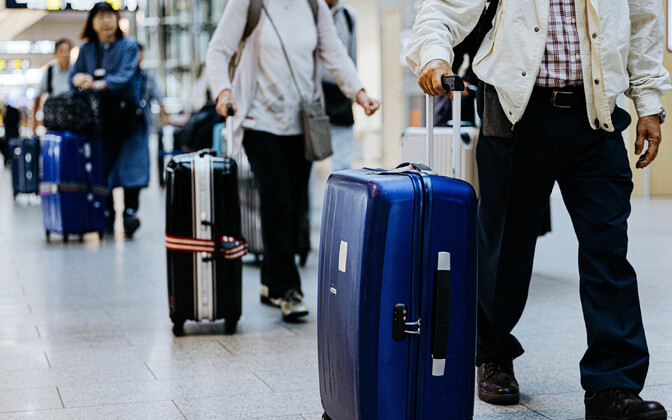A new digital entry/exit system (EES) will be introduced in European countries from October 12, including in Estonia, which will register third-country nationals entering the Schengen area.
The new system will be introduced at all Estonian border crossing points, including the eastern border, ports and Tallinn Airport. It will not apply to Estonian or European Union citizens.
The new system digitally records the entries and exits of non-EU citizens travelling to countries that have joined the Schengen Agreement for a short stay.
When a third-country national crosses the border, their personal data, facial image and fingerprints will be collected at border control, and the exact time and place of entry or exit are recorded.
Entry bans are also recorded in the new system. The next time the person crosses the border, the system can be used to check whether they are entitled to enter the country and whether they have not exceeded the permitted length of stay.
‘More efficient and secure’
Marko Voog, project manager of the Border Management Bureau of the Police and Border Guard Board, said the new system will replace the current system of manual stamping of passports, which is time-consuming and does not allow a systematic detection of overstayers.
He said the new system will make border control more efficient and secure than before, helping to prevent illegal migration and protect the safety of European citizens.
“The new system will also help bona fide third-country nationals to travel more easily while also identifying more efficiently cases of document and identity fraud. In addition to this, the system will allow a wider use of automated border control checks and self-service systems, which are quicker and more comfortable for the traveller,” Voog said in a statement issued by the PPA.
Longer queues expected
As biometric data collection is an additional step in the border control process and takes more time than usual, the change may also have a slight impact on the time it takes for other people to cross the border.
Therefore, you should arrive at the airport or port well in advance so that all necessary procedures could be completed in time without causing additional stress.
Katre Vahtra, the manager of business services at the IT Development Center of the Estonian Ministry of the Interior (SMIT), which carried out the development work, said the preparation of the new system has been extensive and complex.
“In Estonia, the system will be implemented at all border crossing points at the same time. This means that in the first few weeks, there may be longer queues than usual at border crossings, but this is a natural part of launching such a major system change,” she explained.
The PPA suggested that everyone travelling from the Schengen area via Tallinn Airport to use the automated border control gates.
More information about the Entry/Exit System (EES) can be read here.
The launch of the system in Estonia is co-financed by the European Union and the Republic of Estonia’s Ministry of the Interior.
—
Follow ERR News on Facebook and Twitter and never miss an update!
